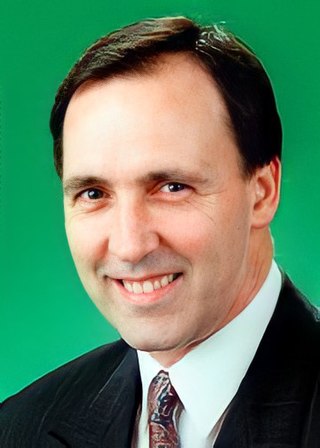
Paul John Keating is an Australian former politician and trade unionist who served as the 24th prime minister of Australia, from 1991 to 1996, holding office as the leader of the Australian Labor Party (ALP). He previously served as the 30th treasurer of Australia in the Hawke government from 1983 to 1991 and as the 7th deputy prime minister of Australia from 1990 to 1991.

Andrew Sharp Peacock was an Australian politician and diplomat. He served as a cabinet minister and went on to become leader of the Liberal Party on two occasions, leading the party to defeat at the 1984 and 1990 elections.

Alexander John Gosse Downer is an Australian former politician and diplomat who was leader of the Liberal Party from 1994 to 1995, Minister for Foreign Affairs from 1996 to 2007, and High Commissioner to the United Kingdom from 2014 to 2018.

Peter Howard Costello is an Australian businessman, lawyer and former politician who served as the treasurer of Australia in government of John Howard from 1996 to 2007. He is the longest-serving treasurer in Australia's history. Costello was a member of parliament (MP) of the Australian House of Representatives from 1990 to 2009, representing the Division of Higgins. He also served as the Deputy Leader of the Liberal Party from 1994 to 2007.

John Robert Hewson AM is an Australian former politician who served as leader of the Liberal Party from 1990 to 1994. He led the Liberal-National Coalition to defeat at the 1993 Australian federal election.
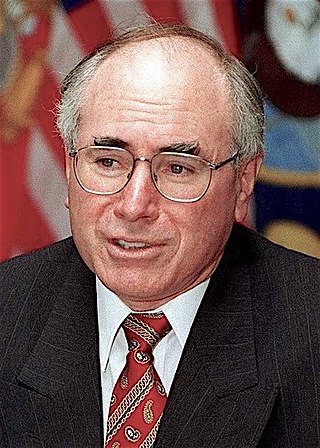
The 1996 Australian federal election was held to determine the members of the 38th Parliament of Australia. It was held on 2 March 1996. All 148 seats of the House of Representatives and 40 seats of the 76-seat Senate were up for election. The centre-right Liberal/National Coalition led by Opposition Leader John Howard of the Liberal Party and coalition partner Tim Fischer of the National Party defeated the incumbent centre-left Australian Labor Party government led by Prime Minister Paul Keating in a landslide victory. The Coalition won 94 seats in the House of Representatives, which is the largest number of seats held by a federal government to date.
Petro Georgiou AO is a Greek Australian politician who was a Liberal member of the Australian House of Representatives from November 1994 to July 2010, representing the Division of Kooyong, Victoria.
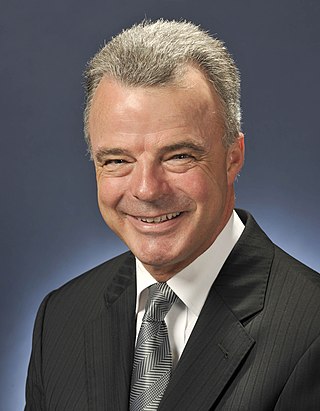
Brendan John Nelson is an Australian business leader and former politician. He served as the federal Leader of the Opposition from 2007 to 2008, going on to serve as Australia's senior diplomat to the European Union and NATO. He now has a global leadership role with Boeing, an aerospace company.

Peter Keaston Reith was an Australian politician who served in the House of Representatives from 1982 to 1983 and from 1984 to 2001, representing the Liberal Party. He was the party's deputy leader from 1990 to 1993, and served as a minister in the Howard government.
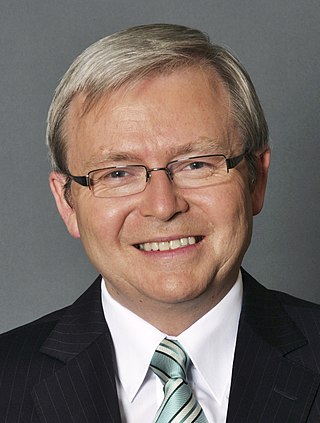
The 2007 Australian federal election was held in Australia on 24 November 2007. All 150 seats in the House of Representatives and 40 of the seats in the 76-member Senate were up for election. The election featured a 39-day campaign, with 13.6 million Australians enrolled to vote.

Andrew John Robb is an Australian former politician. He was a member of the House of Representatives from 2004 to 2016, representing the Liberal Party. He served as Minister for Trade and Investment (2013–2016) in the Abbott and Turnbull governments, and also briefly as Minister for Vocational and Further Education in the Howard government in 2007. Before entering parliament, he was the federal director of the Liberal Party and oversaw the party's return to government at the 1996 federal election.

The 1987 Australian federal election was held in Australia on 11 July 1987, following the granting of a double dissolution on 5 June by the Governor-General Sir Ninian Stephen. Consequently, all 148 seats in the House of Representatives as well as all 76 seats in the Senate were up for election. The incumbent Australian Labor Party, led by Prime Minister Bob Hawke, defeated the opposition Liberal Party of Australia, led by John Howard and the National Party of Australia led by Ian Sinclair. This was the first, and to date only, time the Labor Party won a third consecutive election.
Michael Richard Lewis Wooldridge is an Australian doctor, company director, and former politician. He served as deputy leader of the Liberal Party from 1993 to 1994, under John Hewson. In the Howard government he held ministerial office as Minister for Health and Family Services (1996–1998) and Health and Aged Care (1998–2001). He represented the Liberals in the House of Representatives as the member for Chisholm (1987–1998) and Casey (1998–2001).
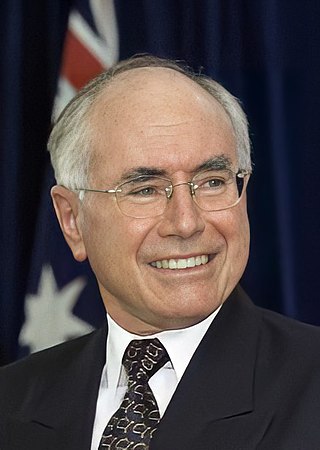
John Winston Howard is an Australian former politician who served as the 25th prime minister of Australia, from 1996 to 2007, holding office as leader of the Liberal Party of Australia. His eleven-year tenure as prime minister is the second-longest in Australian history, behind only Sir Robert Menzies. Howard previously served as the 29th treasurer of Australia from 1977 to 1983 under Prime Minister Malcolm Fraser.
Fightback! was a 650-page economic policy package document proposed by John Hewson, federal leader of the Liberal Party of Australia and Leader of the Opposition from 1990 to 1994. It represented the start of their new "dry", economic liberal future policy direction, very different from the Keynesianism they previously practised. The package was part of their unsuccessful policy platform at the 1993 election.
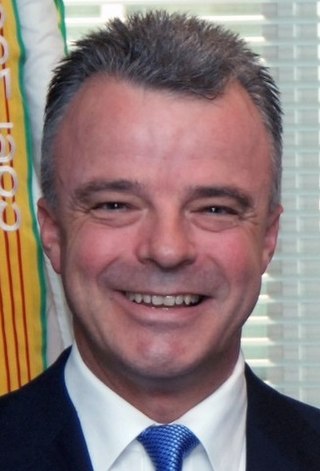
A spill of the leadership of the Liberal Party of Australia took place on 29 November 2007, following the defeat of the Howard government at the federal election five days earlier. The resulting ballot was an open race as outgoing Prime Minister John Howard had lost his own seat at the election, and his preferred successor Peter Costello refused to stand.
The 1995 Wentworth by-election was held in the Australian electorate of Wentworth in New South Wales on 8 April 1995. The by-election was triggered by the resignation of the sitting member, former Liberal Party of Australia leader Dr John Hewson on 28 February 1995. The writ for the by-election was issued on 3 March 1995.

A leadership spill of the Australian Labor Party (ALP) was held on 4 December 2006. Opposition Leader Kim Beazley was challenged by Shadow Foreign Minister Kevin Rudd, while Deputy Opposition Leader Jenny Macklin was challenged by Shadow Health Minister Julia Gillard in a joint-ticket. Rudd defeated Beazley, after which Macklin resigned, leaving Gillard to become Deputy Leader unopposed.

A leadership spill of the federal parliamentary leader of the Liberal Party of Australia was held on 23 May 1994. The incumbent, John Hewson, was defeated by Alexander Downer in a vote of Liberal Party Members of Parliament (MPs) by 43 votes to 36 votes. Downer thus became the Leader of the Opposition in the Parliament of Australia.

A spill of the leadership of the Liberal Party of Australia took place on March 23, 1993, following the 1993 federal election. The spill was won by incumbent leader John Hewson over former leader John Howard by 47 votes to 30 while backbencher Bruce Reid attracted only one sole vote, presumably his own. For the Deputy leadership Michael Wooldridge won against Peter Costello.















